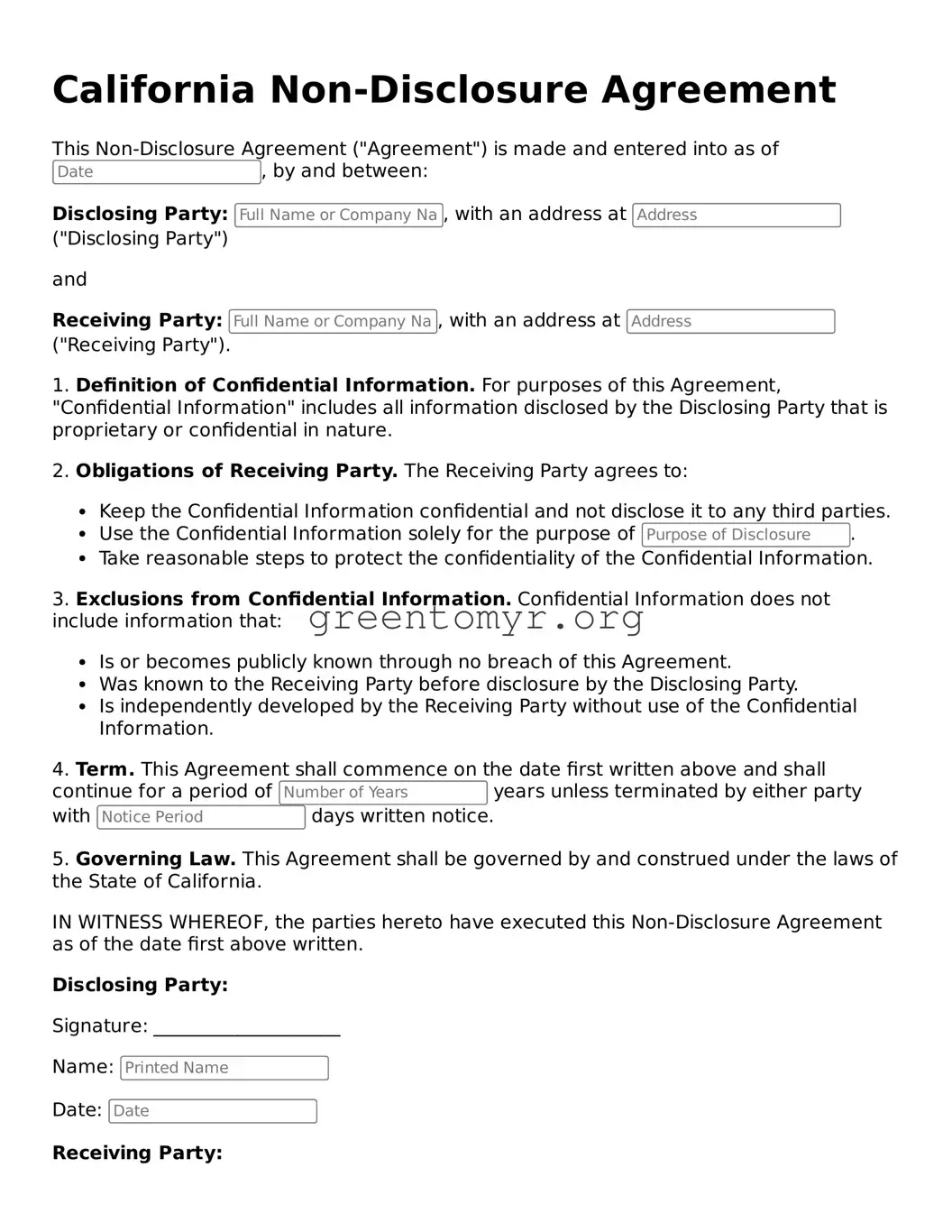Non-disclosure Agreement Form for the State of California
A California Non-Disclosure Agreement (NDA) is a legal document that helps protect confidential information shared between parties. It serves as a safeguard to ensure that sensitive data, trade secrets, and proprietary information remain private. Understanding how to properly fill out this form is essential to maintaining trust and confidentiality in any business relationship.
Ready to secure your confidential information? Fill out the form by clicking the button below.
